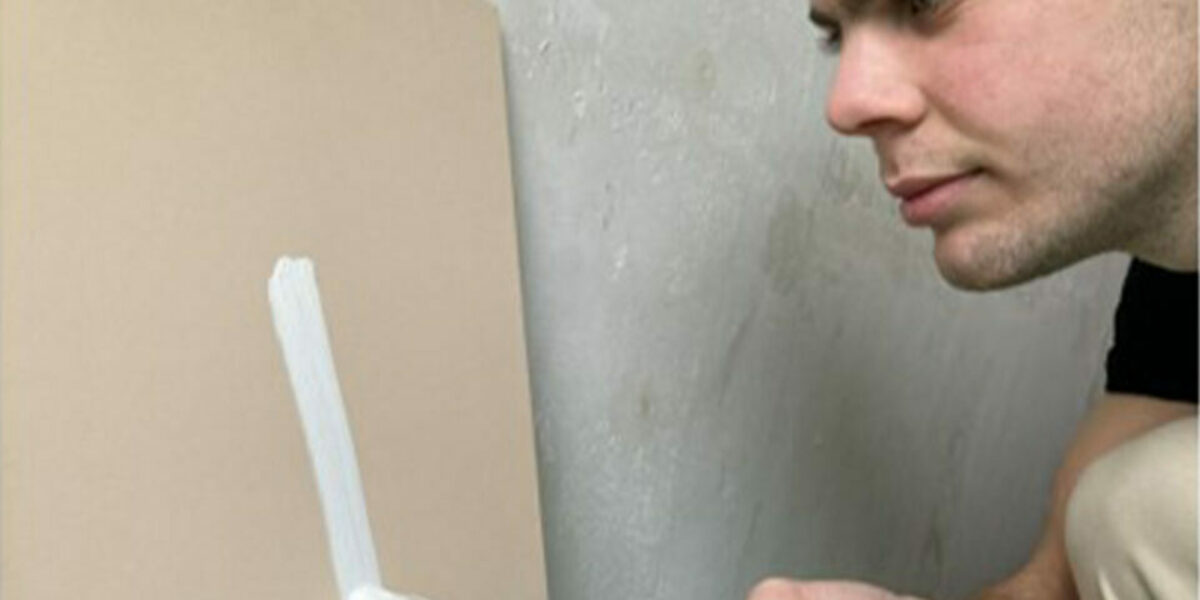25 January 2022

Can you get more out of one paint stroke?
Looking upon the window frames of your house you notice that the paint starts to peel in many places. You know what you will be doing next summer. No holidays, but several days on a ladder applying several layers of paint on your window frames.
This may sound a bit dramatic, but we can probably all relate. You want to paint something, but then you are confronted with how time-consuming this activity really is. You first need to apply a ground layer or primer before applying a final layer of paint . In the end, it means you always need to paint your object at least two times, taking a lot of your energy and your potential holiday time. So wouldn’t it be easier to have a paint that provides these two layers in one go?
This is the question I am working on in my PhD research. I am searching for a paint solution that dries in multiple layers. These multiple layers are necessary for many applications, such as coatings on cars, airplanes and boats, and also your own window frames. The different layers need to have their separate functionalities, e.g. a water repellent layer, an anti-corrosive layer, a color layer or a layer for good attachment to the substrate. Applying all the different layers one by one will not only take a lot of time but will also have a negative impact on the environment. More paint solutions are needed, and more material is needed to store, ship and apply all these different paints for the layers. Creating functional layers from one jar of paint is important, not only to reduce the time it takes to paint, but also for a more sustainable society. Hopefully my research will bring us one step closer to this!
To take this step, we first need to know what a paint looks like on the microscale. At this microscale we see a dispersion with many very small particles (0.05 -0.5 µm in diameter) in a solvent, in my research mainly water. The water will start to evaporate after application of the paint on a surface. During evaporation the particles will come in close contact with each other and the surface. Once the water is almost fully evaporated the particles bind to the surface and to each other.
This evaporation step is very important to finally get a good paint film. Therefore, my focus is to examine the paint and how it behaves during the evaporation. By making use of different particles with different properties we could provide a paint with different functionalities. We need to be able to stack the particles in different layers during the evaporation process, also called stratification. This may sounds pretty easy; however, it is challenging. Luckily there is a method to get stratification. Researchers found out that if you use particles of different sizes, the large particles will accumulate near the substrate and the small particles near the evaporation front. Even flipping the substrate will still provide the same result. With these results I started my research trying to unravel in more detail what exactly drives this stratification during the evaporation. The exact mechanism of the stratification and the influences of many factors such as particles sizes, particle interactions and evaporation speed are still unknown. These factors and mechanism are essential to understand to create paints formulations that stratify in multiple layers. Therefore, this part of my research is very fundamental, but essential for the future.
Meanwhile we also try to directly apply this stratification principle in a more practical system. In this practical system, we test particle dispersions with large soft glue-like particles and small hard glass-like particles. These soft particles are ideal for attachment of the paint layer to the surface, while the small hard particles provide hardness (anti-scratch) and prevent the film from sticking to the film (anti-fouling). In this case we like to have the soft particles near the substrate and the small particles at the top. With different techniques we try to find out, where the particles end up in the paint layer. In that way we investigate if this newly created stratified paint layer attaches well to the bottom and provides an anti-fouling and anti-scratch layer near the top.
I am sure my research will benefit to better understanding of the stratification mechanism. With that knowledge we can explore new practical systems that will lead to new paint formulations that will stratify. So can you get more out of one paint stroke? Not yet, but in the future these sustainable paints will make sure that your holidays will be a real vacation again.
